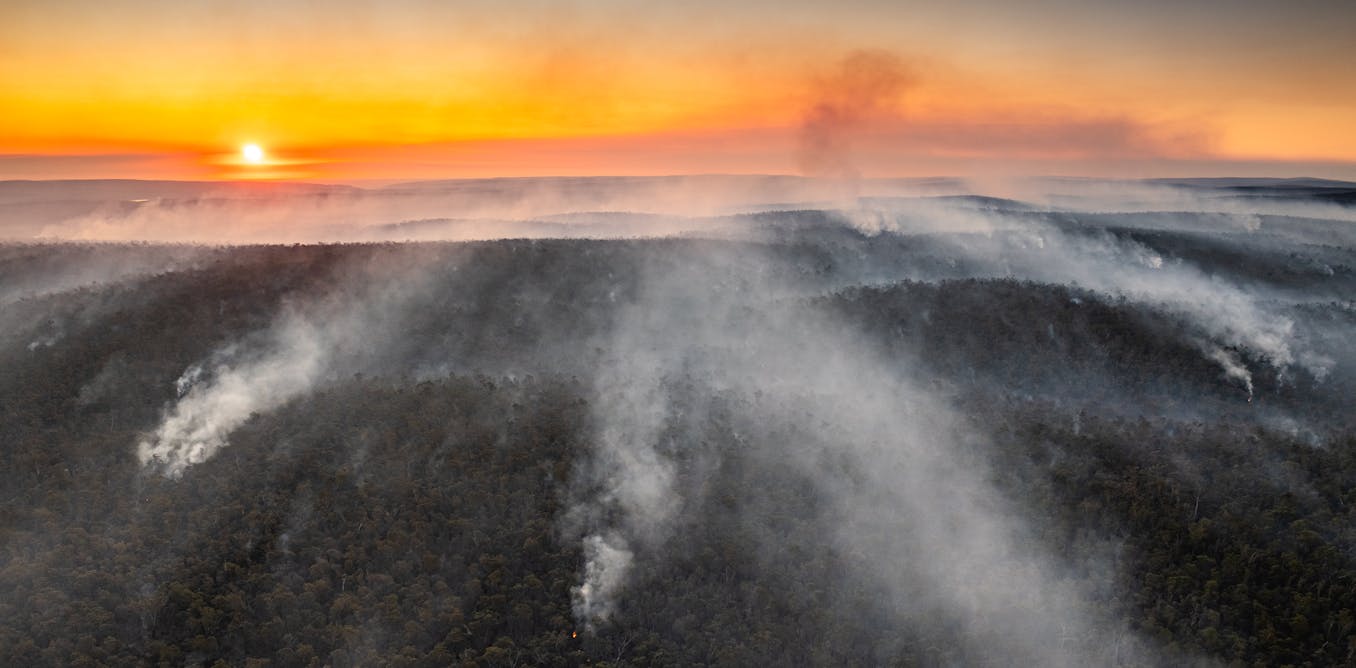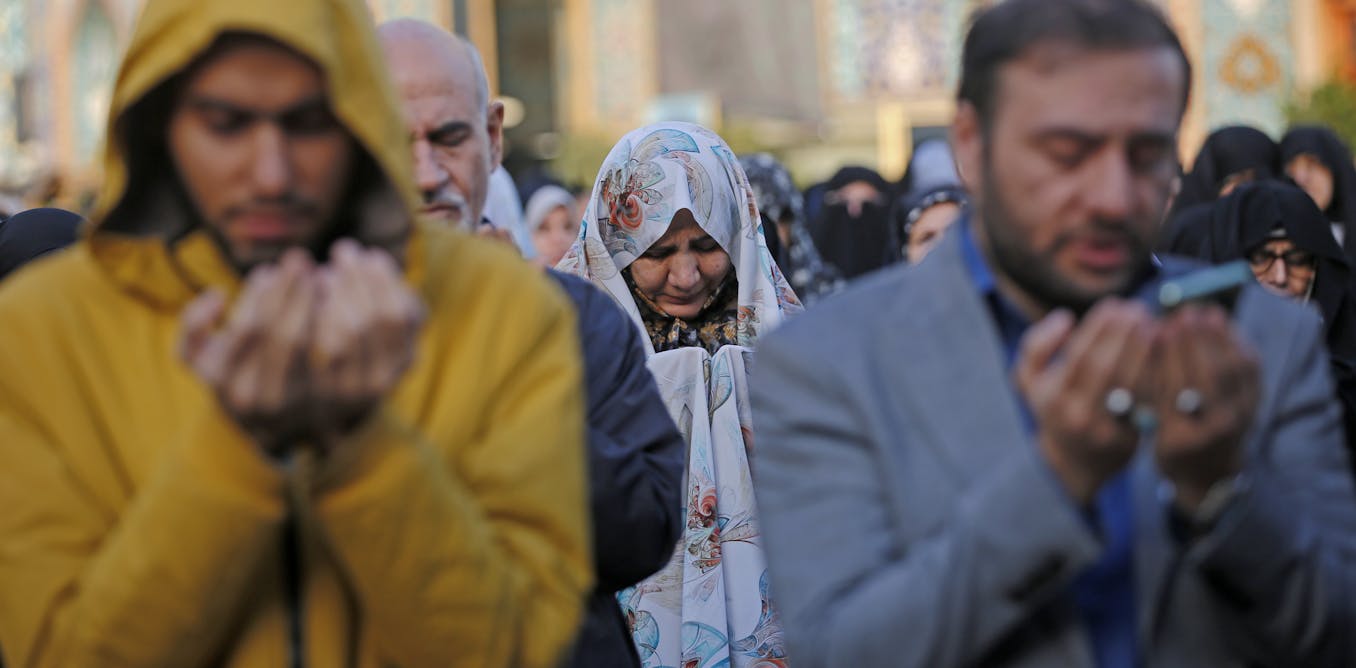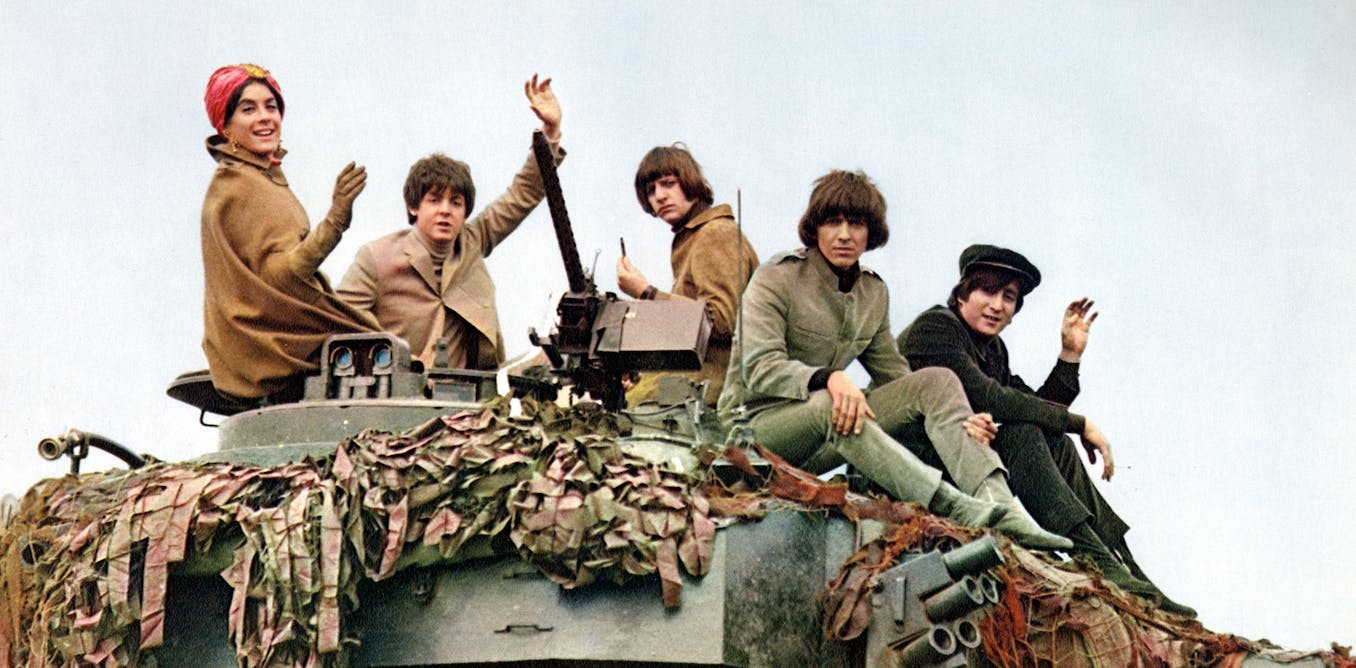This month’s streaming lineup has plenty to offer, whether you’re chasing thrills, a nostalgic romcom, or some humour to keep you company as you settle in after a long day of work.
If you’re feeling moody, there’s a sleek new Australian thriller on Stan, as well as a true crime series following the mushroom murder trials that shook the nation.
Alternatively, if you’re after some comic relief, we’ve got two hilarious mockumentaries that will turn the volume up to 11. So sit back and enjoy.
Watching You
Stan, from October 3
The new Stan limited series Watching You is a worthy addition to the suite of stylish crime thrillers produced in Australia in recent years.
At the centre of this tense and absorbing series is Lina (Aisha Dee), a paramedic with a taste for risk. She’s happily engaged to Cain (Chai Hansen), but for a fleeting encounter with an enigmatic stranger Dan (Josh Helman).
A reckless one-night stand quickly spirals into a nightmare, as Lina and Dan discover the affair has been secretly filmed, and the footage is being used to blackmail her. As paranoia takes hold, Lina embarks on a desperate hunt to unmask the voyeur.
Watching You has a distinctively Australian noir sensibility. Director Peter Salmon, production designer Virginia Mesiti and cinematographer Shelley Farthing-Dawe took inspiration from Sydney’s oppressive summer heat, using natural elements as active forces in the drama.
By exposing for harsh sunlight and embracing deep, enveloping shadows, they create an atmosphere that amplifies Lina’s internal conflict.
Beyond its surface thrills, Watching You also engages with weighty themes such as addiction and compulsion. As the story develops, there is an interesting exploration of coercive control and the insidious nature of a culture of male violence towards women.
Equally potent is the commentary on surveillance culture. In an era where every phone, security camera, and laptop may be a potential tool of voyeurism, Watching You cleverly exploits our modern technological anxieties.
With a powerhouse performance from Aisha Dee, strong visual design and a meaningful thematic foundation, this is elevated Australian noir: well-crafted, sexy and suspenseful.
– Adam Daniel
This is Spinal Tap
Various platforms
With Spinal Tap II: The End Continues hitting cinemas, now is the perfect moment to revisit its precursor, one of most influential and hilarious comedy films ever made, 1984’s This Is Spinal Tap.
Directed by Rob Reiner and co-written by Reiner and the stars of the film, Christopher Guest (as Nigel Tufnel), Michael McKean (David St. Hubbins) and Harry Shearer (Derek Smalls), the mockumentary film follows a fictional British heavy metal band on a disastrous tour of the United States.
As audiences dwindle, equipment fails and egos clash, the band’s decline satirises rock’n’roll excess and the absurdities of the music industry.
Ego clashes, overblown stage shows and catastrophic tours were commonplace to the era. Spinal Tap’s deadpan mockumentary style was both a timely satire, and an authentic cultural commentary.
Moments such as Nigel boasting about his amplifier going “to 11”, Derek’s airport security incident, the band getting lost on the way to the stage, and the 18-inch (instead of 18-foot) Stonehenge stage prop have become iconic. But there are so many great gags on the periphery, layered through the largely improvised dialogue.
The brilliance of the film goes beyond its ribald satire. Of vital importance is the skilful musicianship of the cast. Even if they are a joke, Spinal Tap can play. The great rock riffs sustain the silliness of the lyrics in songs like Sex Farm and Big Bottom.
– Adam Daniel
Read more:
Why This Is Spinal Tap remains the funniest rock satire ever made
How To Lose A Guy in 10 Days
Netflix
The narrative design of Donald Petrie’s 2003 romcom is stunning. Andie (Kate Hudson), who writes articles like “How to Love Your Legs” for a women’s magazine, is commissioned to write a piece based on committing all of the dating faux pas that, apparently, turn men off.
Meanwhile, Ben (Matthew McConaughey), a hyper-masculine advertising gun, takes on a wager that he can make any woman fall in love with him in ten days. If he wins, he’ll have the opportunity to pitch to a lucrative client.
They inevitably lock onto each other, and much of the humour of the film comes from the combination of Andie’s deranged attempts to repel Ben, and his equally deranged refusal to be repelled – each unaware of the other’s ulterior motives.
Like the best romcoms, there’s a Shakespearean quality to its symmetry. The fact there’s no power imbalance between the future couple – they’re equally Machiavellian – means that, unlike some of its ilk, it doesn’t come across as mean-spirited.
How to Lose a Guy is perfect for streaming. It translates well to the small screen, unfolds at a leisurely pace, and is buoyed by its likeable stars and familiar supporting cast.
It ain’t Grant and Hepburn, or even Hawn and Chase, but reengaging with a film from a pre-COVID and pre-Trump era feels wonderfully nostalgic. And this, perhaps, is the best thing about streaming services: they rejuvenate films in the popular domain – and retroactive reassessments can turn an above-average romcom into an endlessly rewatchable classic.
– Ari Mattes
1670, season two
Netflix
The second season of Netflix’s 1670 confirms the 17th century Polish-Lithuanian Commonwealth is perfect material for satire. This early-modern state was created in 1569 when Poland and Lithuania joined forces. At its height, it stretched from the Baltic Sea to modern Ukraine, making it one of Europe’s largest states.
Ruled by an elected king and a parliament dominated by nobles, it lasted until 1795, when Russia, Prussia and Austria carved it up in three “partitions”. It is remembered as colourful, ambitious and deeply dysfunctional. And this dysfunction fuels the comedy in 1670.
While season one introduced the Adamczewski family and their provincial quarrels, season two offers trips abroad, more elaborate plots and a brighter visual style. Jan Paweł Adamczewski still longs to be “the most famous John Paul in Polish history”.
His household stumbles through failed diplomacy with the Ottomans, an overblown harvest festival and comic scandals. Along with familiar faces returning – such as Zofia the zealot, Aniela the proto-feminist and Jakub the scheming priest — new faces help sharpen the farce.
What makes 1670 distinct is its mix of absurd anachronisms, such as climate change debates, casino gambling and Eurovision-like song contests. There are also sly nods to historical realities. For instance, the liberum veto, which allowed one noble to collapse parliament, is both a gag and a reminder of how fragile the commonwealth was.
For Polish viewers, the satire pricks national myths. For others, it opens a window to a forgotten European power. The lesson is simple: states collapse when vanity outweighs cooperation — and laughing at the past may be the best way to understand it.
– Darius von Guttner Sporzynski
Force of Nature: The Dry 2
Netflix
Jane Harper’s latest novel, Last One Out, is due to hit the shelves this month. While you wait, you can enjoy Force of Nature: The Dry 2, a film adaptation of Harper’s 2017 thriller Force of Nature.
Eric Bana reprises his role as Aaron Falk, the loner detective. His investigation of corporate corruption is transferred to the sweeping vistas of the fictional Giralang Ranges (filmed in the Dandenongs and the Yarra Valley). Just as director Robert Connolly noted of The Dry, in this sequel “all the major emotional and narrative elements are in the orbit of the landscape”.
The Giralang Ranges are depicted with all the terrifying power of the Gothic sublime, in which nature inspires terror and awe in vulnerable humans, a threat compounded by the area’s history as a site of a series of grisly murders.
While this sequel does not follow on from the events of The Dry (except insofar as it also features Falk), Connolly does use the opportunity to flesh out Falk’s back story, including the mysterious disappearance of his mother in the same region decades earlier.
Force of Nature is more beautiful than it is complex, but makes for an absorbing screen thriller.
– Jessica Gildersleeve
Revealed: Death Cap Murders
Stan
The three-part documentary Revealed: Death Cap Murders depicts Erin Patterson as a loner who craved community and a liar who would “stop at nothing” to achieve her own ends.
Directed and produced by Gil Marsden, Death Cap Murders blends news footage and interviews with the benefit of hindsight to create a complex portrait of a woman whose motives may never be known.
The series unfolds in a montage format, interweaving the investigative work of crime journalists Marta Pascual Juanola and John Silvester (The Age) with interviews from Patterson’s former colleagues, classmates and friends, as well as mushroom experts, psychologists and doctors.
In doing so, the series offers a layered portrayal of Patterson as an almost Jekyll-and-Hyde figure – both vulnerable and volatile.
The truism that two things can be true at once is skilfully embodied by the series, which captures the story’s many contradictions: the locals’ simultaneous embrace of the media alongside their plea for privacy; the obvious inconsistencies in Patterson’s evidence.
Of course, any retelling of the mushroom case will be a why-dunnit rather than a matter of who, how or when.
Death Cap Murders asks why a woman who yearned for connection would ultimately destroy the very thing she sought.
– Kate Cantrell
Task
HBO Max
Mare of Easttown creator Brad Ingelsby returns with another Pennsylvania-based crime drama. Mark Ruffalo is Tom Brandis, an FBI agent who is called in to head a task force investigating a series of armed robberies of “trap houses” operated mostly by the fearsome Dark Hearts bikie gang.
Tom has only recently returned to work following a family tragedy. His team includes Lizzie (Alison Oliver), a state trooper who is introduced as a hot mess, Anthony (Fabien Frankel), a cool detective, and Aleah (Thuso Mbedu), a reserved and on-the-ball cop. Robbie Prendergrast (Tom Pelphrey) is the garbage collector who has been coordinating the trap house robberies. Like Tom, he has his own backstory full of grief.
Much like Mare of Easttown, this ensemble cast isn’t neatly divided into “good” guys and “bad” guys. Throughout the many twists and turns of this cat-and-mouse game, it starts to become clear everyone’s motivations are more complicated than you initially expect.
While Mare of Easttown was primarily concerned with motherhood, Task is fundamentally about what it means to be a good father, as both lead characters are motivated, and in turn distracted, by their pursuit of providing for their families.
Ruffalo and Pelphrey are excellent in their lead roles, as are many of the supporting players. The two opening episodes are directed by Jerimiah Zagar, who also directed the 2018 coming-of-age drama We The Animals. Zagar balances the grim tone and shifting perspectives in an absolutely gripping manner.
– Stuart Richards
Memory: The Origins Of Alien
Stan and DocPlay
Memory: The Origins of Alien, directed and written by Alexandre O. Philippe, is a rare kind of documentary that is as haunting and fascinating as the film it dissects. The title, “Memory”, refers to the original name of the Alien (1979) script – but it could also refer to the deep pleasures of nostalgia the film taps into.
The documentary features scenes from the first Alien film, interwoven with footage and stills from the 1950s and ‘60s films and comics that inspired the creators. It also recognises a largely unknown hero of the Alien universe, the late writer and artist Dan O’Bannon.
We learn Dan was suffering from Crohn’s disease while writing the script, and the abdominal pain he experienced may have inspired the creation of the inner parasitic monster that bursts from its host’s body.
The film succeeds in explaining the gendered and psychoanalytic landscape of Alien, without explicitly mentioning Sigmund Freud, Carl Jung or Barbara Creed’s “monstruous-feminine”.
The interviewees refer to the “mythic other” of the “collective consciousness”. They also acknowledge the spacecraft crew are “effectively raped” by a phallic Alien being. And the nightmare narrative is illustrated with close shots of H.R. Giger’s original biomechanical airbrushed images of the Alien.
Memory is a rich tapestry of dark texts and deep reflection that will add new layers of meaning to your viewing of the original film. It is a work of art in its own right, and essential viewing for horror film fans.
– Susan Hopkins

The post “what to watch in October” by Adam Daniel, Associate Lecturer in Communication, Western Sydney University was published on 09/30/2025 by theconversation.com



































Leave a Reply